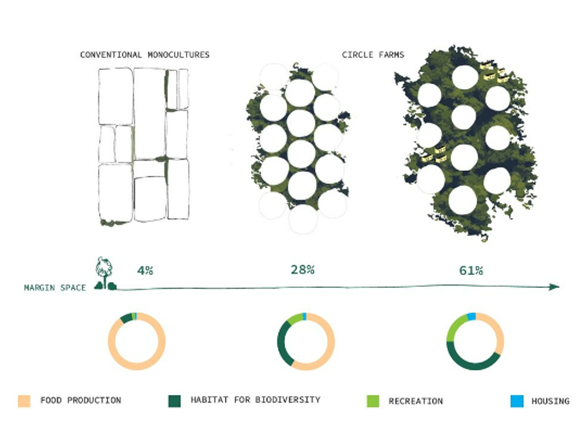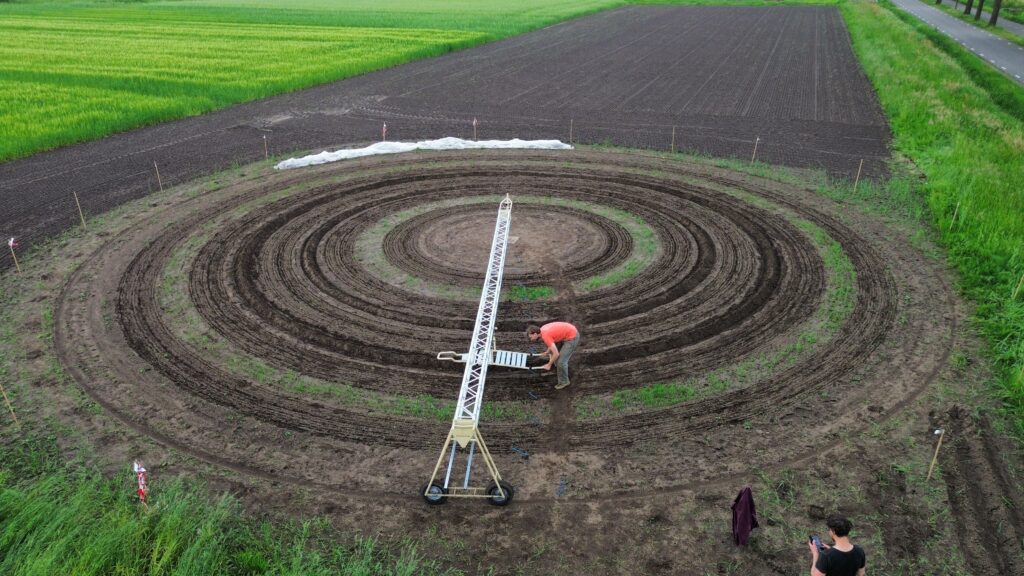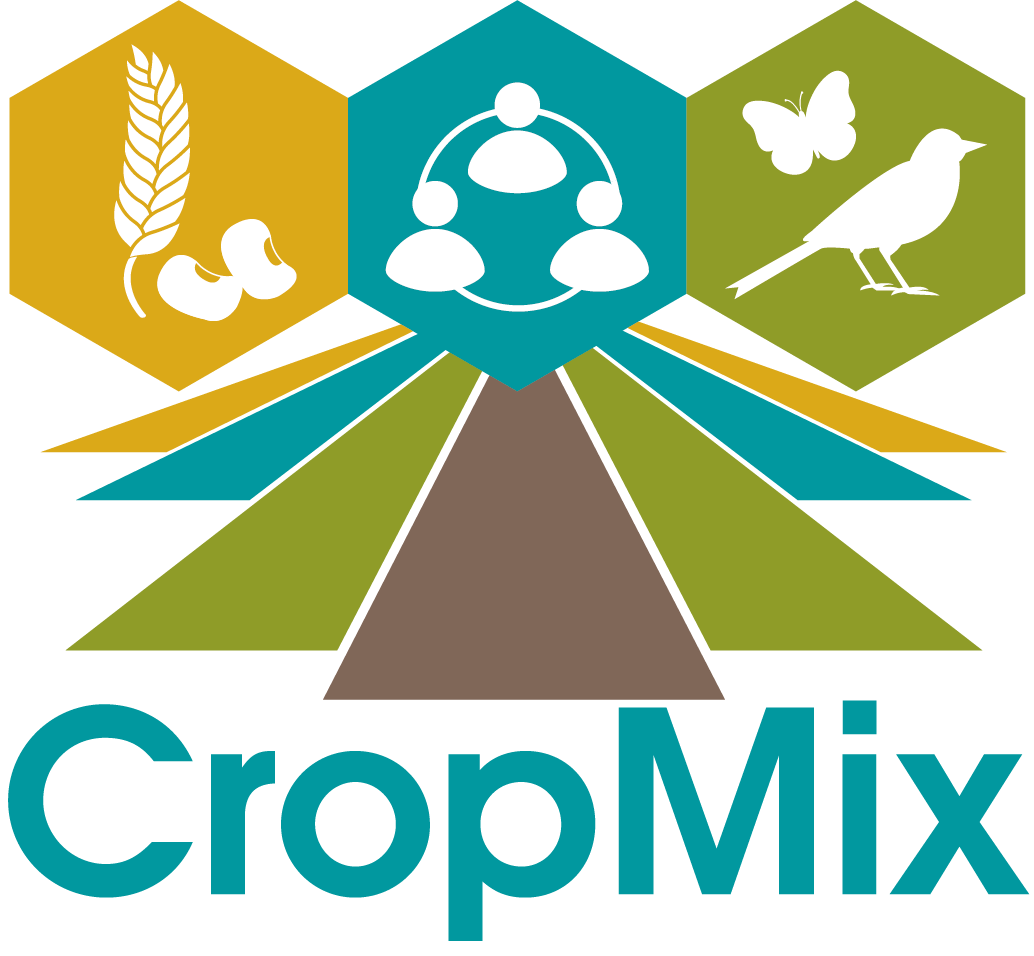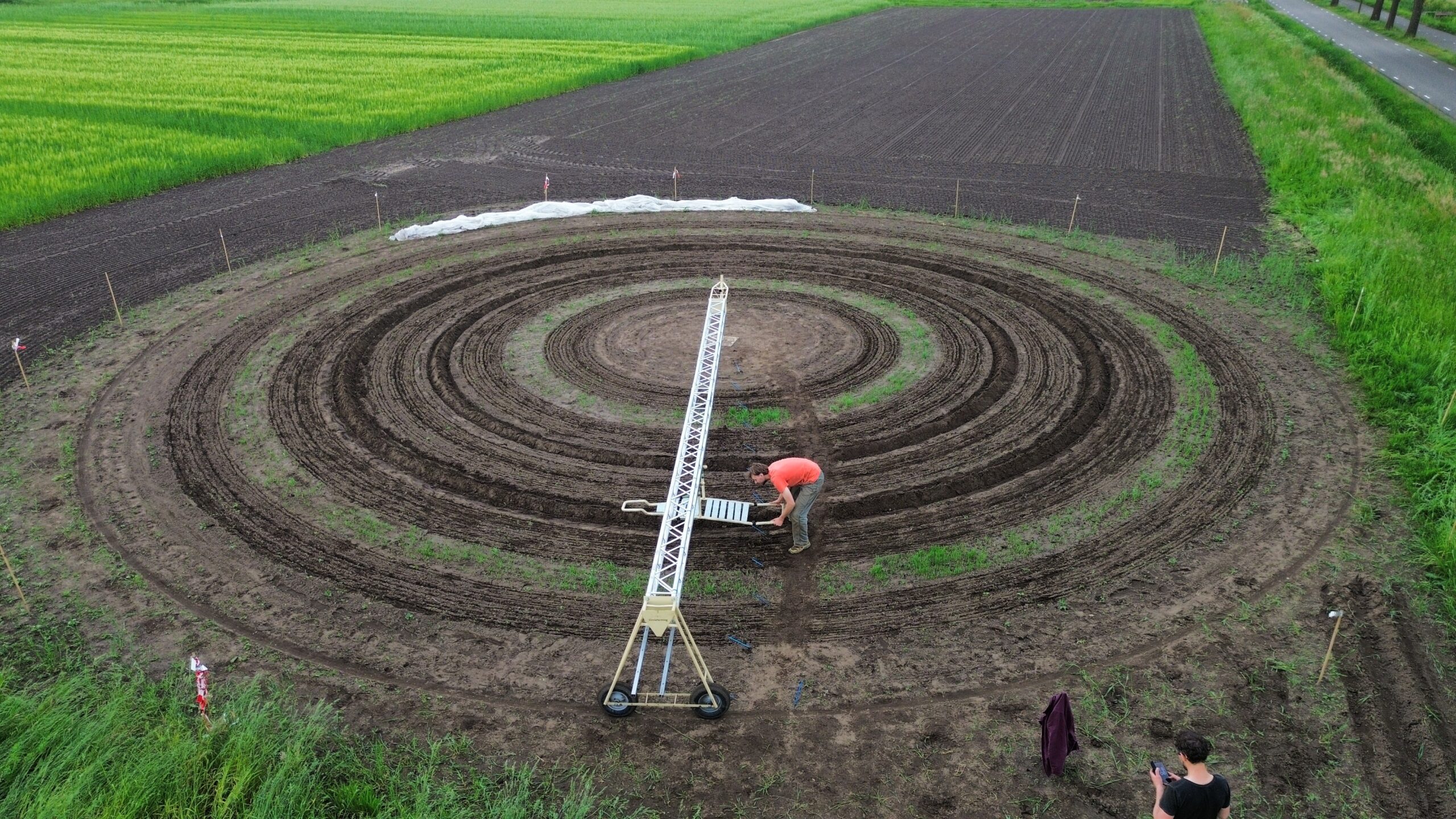At the junction of Kielekampsteeg and Bornsesteeg, near the WUR campus, lies the prototype of what designer Floris Schoonderbeek calls a Circlefarm. With this circular field, Floris and his team are literally trying to reshape the landscape. They are developing an alternative to today's mostly straight fields with monocultures, which are often separated from inhabited areas and nature.
With the Circlefarm, the team wants to contribute to less sharp boundaries between city and countryside and between nature and agriculture, through different use of space. For example, a circular field means that the corners that remain can be used for something else. This could be nature, for stimulating biodiversity, but in the case of larger circles, for example, also space for housing.

Source: circlefarming.org
A long arm spins across the circular field, from which you can hang all kinds of tools. "We took tools out of the barn that the farmer had already forgotten were still there!" says Floris. Currently, the arm is still being tinkered with and will soon be electrically operated. The arm will also have cots on which people can lie for manual work. The aim is not to do everything manually, but also not to make everything autonomous. The aim is to find an optimum between technology and manual work. "The human touch is our starting point in this," Floris says, "The arm is also a helping hand in a figurative sense."
Currently, Floris and his team are sowing the circle with the same crops as on WUR's experimental fields: cabbage, oats, pumpkin, faba bean and potato. Next season, researchers will also monitor the crops on the Circlefarm, although it is still too small-scale to expect hard results. This first year is mainly trial and error.
The prototype in Wageningen is part of an art project visualising the loss of biodiversity over the past decades through strip cultivation. Each 1.5-metre-wide strip represents a year since 1970 and is sown with a flower-to-grass ratio based on the WWF Living Planet Index. This visualises the loss of biodiversity since 1970. Just before Pentecost, the flowers were sown.
This timeline in the field extends into the future. The timeline depicts how biodiversity can recover if we manage to turn the tide. The Circlefarm is at the end of the timeline as inspiration for the future.
Read more on www.circlefarming.org.

Watch this episode of De wereld van Dutch Design [The World of Dutch Design] in which Floris talks about the circlefarm. The item starts at 16 minutes. The video is in Dutch.


